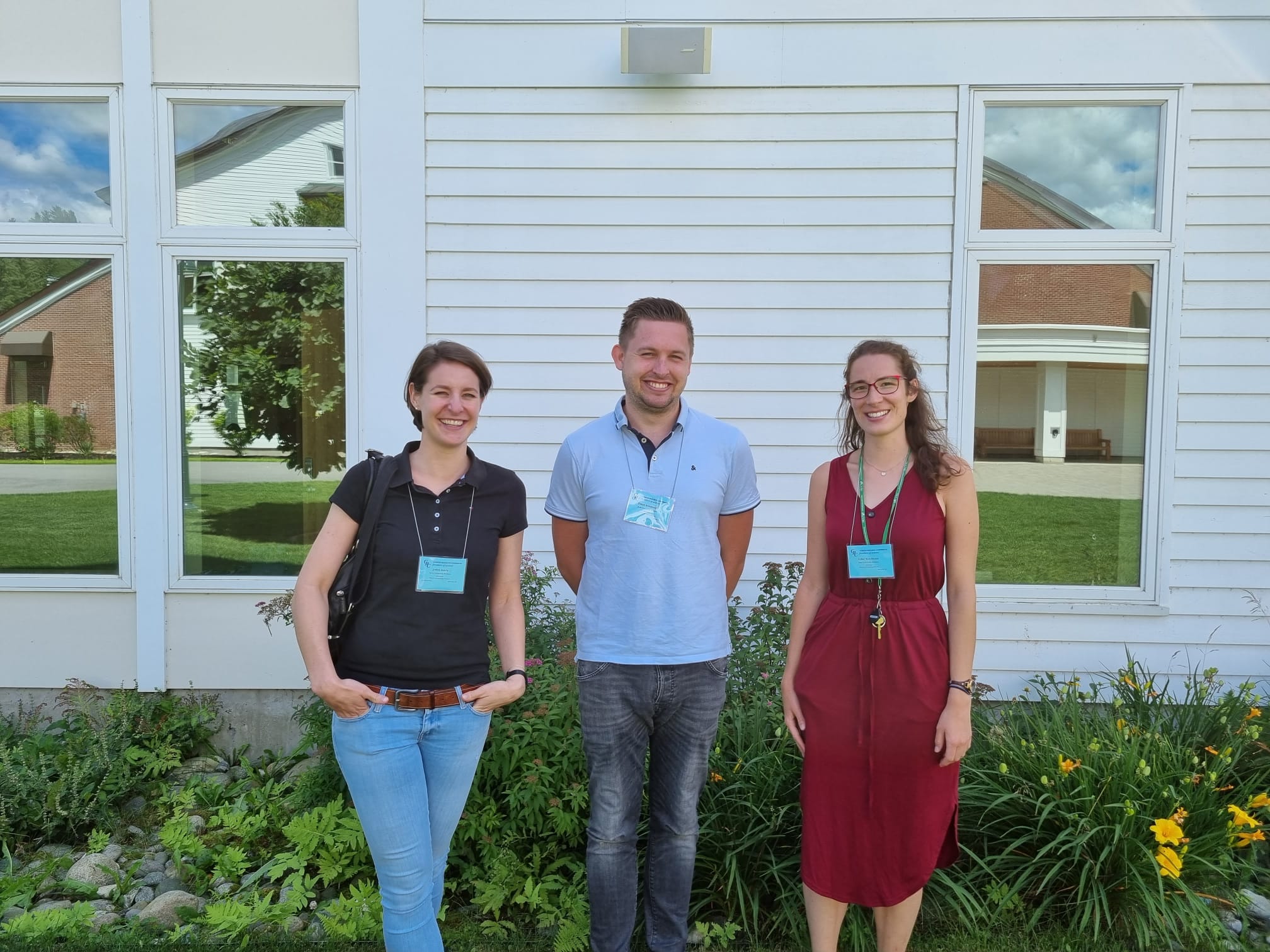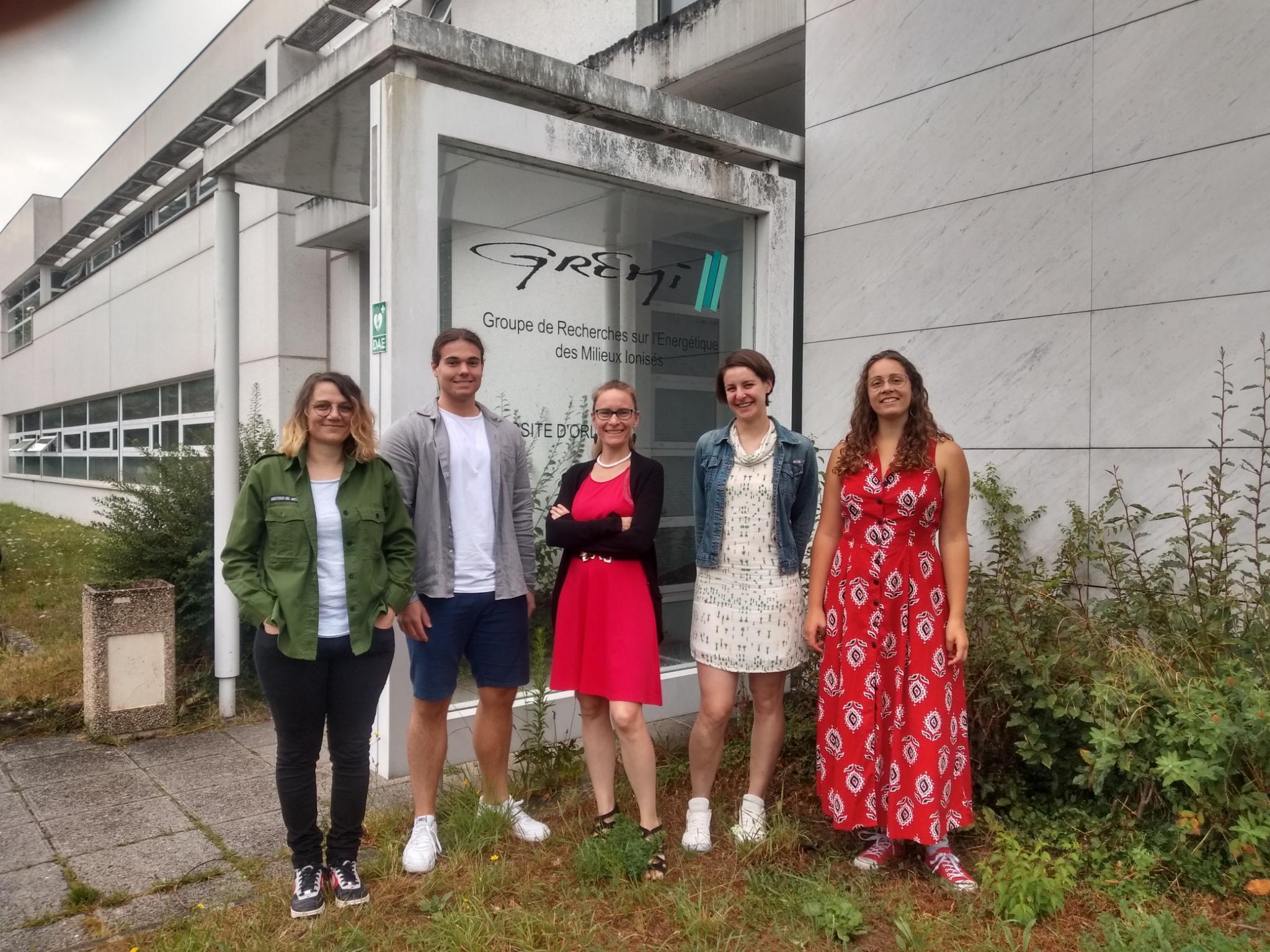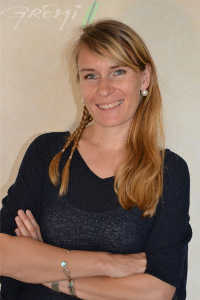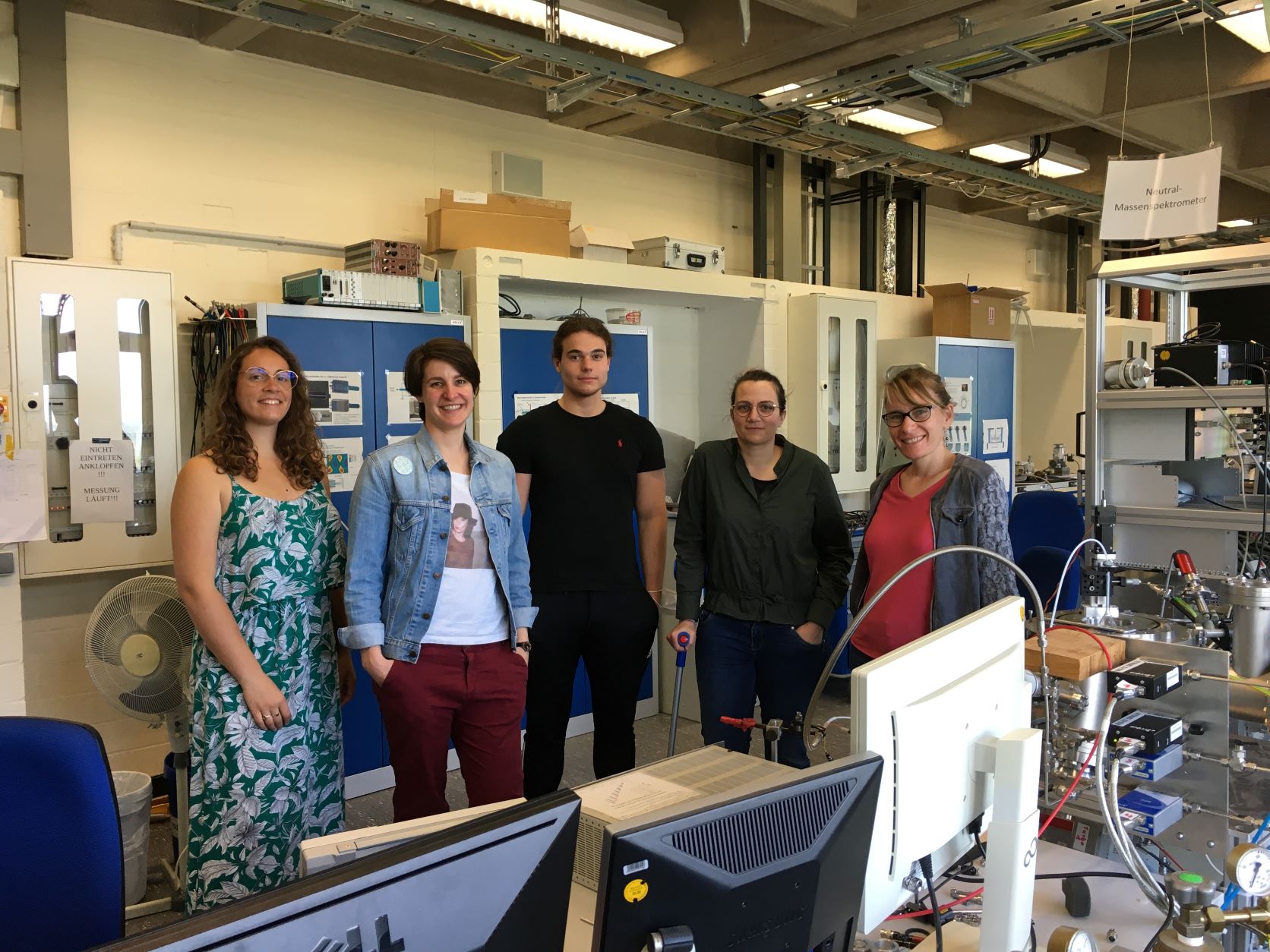- Details
Gordon research conference
From July 23rd to July 29th the Gordon Research Conference and Seminar on Plasma Processing and Science was held in Andover, New Hampshire. The conference focused on plasmas and their interactions with matter while the seminar focused on investigating multiphase and multiscale plasma-material interactions. Judith Golda from the CRC 1316 had a talk on "State enhanced actinometry in atmospheric pressure discharges". Furthermore, she organised the so-called "Power Hour" at the GRC - an event to raise awareness of the challenges in the field of

- Details
Research stay at GREMI laboratory
From 18 July to 29 July, Jun.-Prof. Judith Golda, Dr. Laura Chauvet, and Daniel Henze were guests in the laboratory of Prof. Claire Douat at the GREMI in Orléans. In a joint measurement campaign, two different atmospheric pressure plasma jets were tested. They measured the production of CO at different operating conditions with a gas analyzer. This trip was funded by the DAAD as part of a PROCOPE project to improve cooperation between RUB and GREMI.
 Laura Chauvet, Daniel Henze, Claire Douat, Judith Golda, and Eloise Mestre
Laura Chauvet, Daniel Henze, Claire Douat, Judith Golda, and Eloise Mestre
- Details
Company outing Chair and working group 2022
Today we went on the Ruhr together with the Chair of Experimental Physics II: we paddled from Lindenau towards Hattingen in two inflatable boats. We then took the streetcar back to the university to round off the day with a small barbecue.

- Details
ICOPS conference in Seattle
The 49th International Conference on Plasma Science (ICOPS) was held in Seattle from May 22 through May 26. It was one of the first conferences since the beginning of the COVID pandemic situation that was organized as a hybrid conference and partly held on site. It was nice to be back at a live conference getting in touch face to face with other researchers. More than 350 on site attendees visited the conference and more than 150 researchers joined the conference virtually. The conference venue was the Sheraton Grand Seattle located in Seattle Downtown. The scientific program reached out to wide varieties in the field of plasma physics covering topics such as basic phenomena in high temperature fusion plasmas or low temperature plasma jets up to the applications of different sources as for example in medicine, agriculture or for environmental purposes.
Beside the scientific program there were lots of things to discover around the area such as strolling at the famous Pike Place Market or going up the Space Needle to get a great view over the city and the 4392m high volcano Mount Rainier, if it does not hide itself in dense clouds. During the conference a spontaneous group event took place, exploring the night life of Seattle together with around 30 other researchers and the conference was eventually closed with a nice banquet.
Patrick Preissing, project B2

- Details
Visit of CRC 1316 students at Avantes
The participants of the lecture "Plasma Diagnostics" from this and previous semesters visited the company Avantes in Apeldoorn, NL on 3.6.22. The Dutch company is specialized in so called hand-held or USB spectrometers and related accessories. These spectrometers are popular for species identification but also for monitoring plasmas.
During the from the Faculty of Physics and Astronomy supported excursion, insights into the production and new developments were given in addition to further application possibilities. In two small workshops, current plasma-relevant diagnostics could be used live, namely Raman spectroscopy and laser-induced breakdown spectroscopy (LIPS), which directly closed the circle to the lecture.
Students from the Faculty of Physics and Astronomy who are writing their theses as part of CRC 1316 participated in the trip.

- Details
French guests at PIP laboratory
Within the frame of the PROCOPE project, Claire Douat and Eloise Mestre from GREMI in Orléans, France, visited the Bochum lab of Jun.-Prof. Judith Golda. The research stay took place between May 8 and May 22, 2022, to study CO production in a kHz jet source using mass spectrometry.
PROCOPE is a DAAD funded project to enhance the cooperation between RUB and GREMI.
JEloise Mestre, Judith Golda, Daniel Henze, Laura Chauvet, and Claire Douat in the mass spec laboratory
- Details
Approval for DAAD PROCOPE project
In collaboration with Dr. Claire Douat from the institute GREMI in Orléans, France, a joint DAAD project on the diagnostics and application of plasma radiation as a CO source for sterilization in wound healing was submitted this year. This has now been approved by the DAAD for 1.1.2022.
The aim of the project is to investigate the production pathways and the role of the CO molecule in the plasma treatment of biological material. To study CO generation in CAPs, two well-characterized plasma sources will be used that have complementary operating principles: A radial kHz-dielectric barrier discharge with direct contact of the plasma including ions, electrons, and strong electric fields with the treated substrate; and a coplanar RF discharge where only the field-free plasma effluent containing reactive species and plasma-generated photons reaches the substrate. This project will explore possible synergistic effects between CO and plasma-generated species such as electric fields, ions and electrons, photons, and other neutral radicals. The two complementary plasma sources will be used to distinguish the effects of indirect and direct plasma treatment on the impact of plasma-produced CO on bacteria. The plasma sources used here will be characterized with CO2 admixture to ensure that the amount of CO produced is below the toxicity limit. Parameter variations will be used to determine the optimal CO production conditions.
The project includes travel expenses to address the planned research questions.



